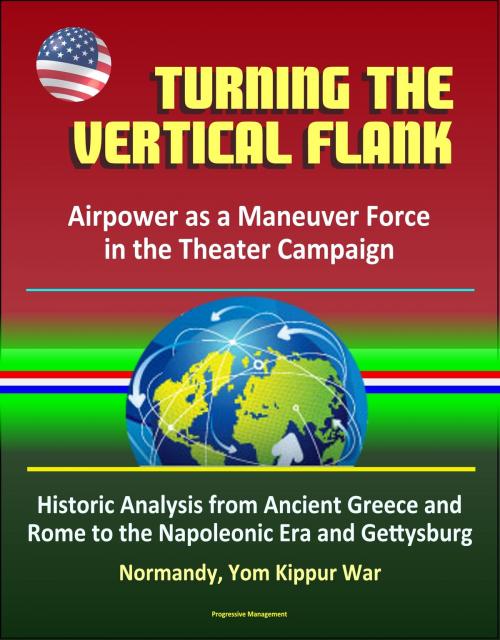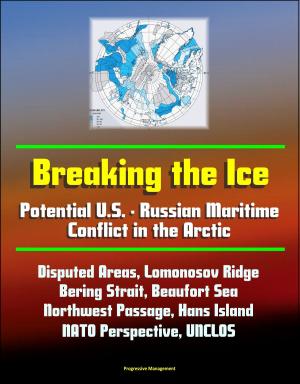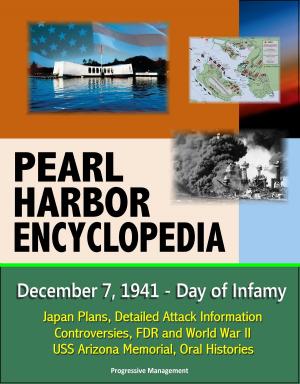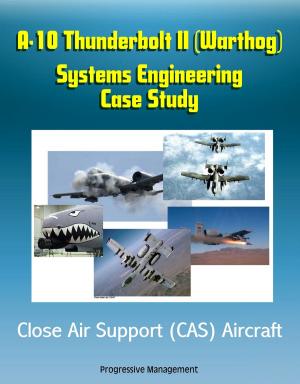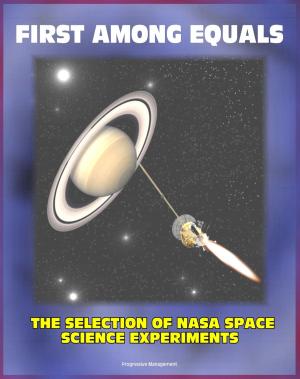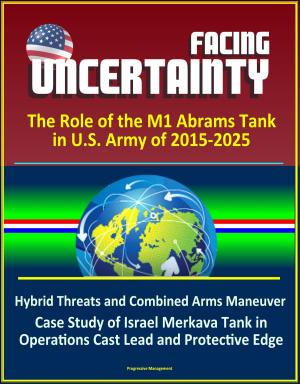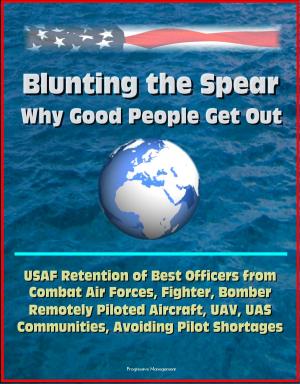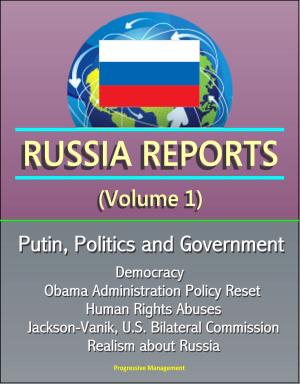Turning the Vertical Flank: Airpower as a Maneuver Force in the Theater Campaign: Historic Analysis from Ancient Greece and Rome to the Napoleonic Era and Gettysburg, Normandy, Yom Kippur War
Nonfiction, History, Military, Strategy, Aviation| Author: | Progressive Management | ISBN: | 9781370778089 |
| Publisher: | Progressive Management | Publication: | September 7, 2016 |
| Imprint: | Smashwords Edition | Language: | English |
| Author: | Progressive Management |
| ISBN: | 9781370778089 |
| Publisher: | Progressive Management |
| Publication: | September 7, 2016 |
| Imprint: | Smashwords Edition |
| Language: | English |
This excellent report, professionally converted for accurate flowing-text e-book format reproduction, addresses a question that is fundamental to the debate about the extent that airpower can function as a maneuver force in a theater campaign.
The U.S. Air Force contends that airpower is a maneuver force and frequently turns to the 1991 Persian Gulf War for evidence in support of their position. Those critical of the Air Force's view argue that Operation Desert Storm was an aberration and charge that arguments based on that essentially unique event are suspect. Seeking to parry the charge of exceptionalism, Givens deliberately sets out to provide a more broadly grounded study that transcends the particular experience of Operation Desert Storm.
Colonel Givens begins with a general examination of warfare from ancient Greece to the American Civil War in order to determine the essential functions of a maneuver force. He then examines three distinctly different air operations in reverse chronological order: airpower employment in the 1973 Arab-Israeli War, the use of airpower in conjunction with South Vietnamese ground forces to frustrate the Communist Easter offensive of 1972, and operations against the Wehrmacht during the 1944 Normandy campaign. The evidence in all three cases suggests that airpower can function as a maneuver force. The conclusion is—if capable of serving as a maneuver force, airpower can greatly enhance the joint theater campaign both independently and in cooperation with other maneuver forces.
Chapter 1 - INTRODUCTION * Methodology * Clarifications * Notes * Chapter 2 - FUNCTIONS OF A MANEUVER FORCE * Ancient Greece: Shock Action through Direct Contact * Rome: A Maneuver Force Exerts a Zone of Influence over the Enemy * Neoclassical Period: A Maneuver Force Compels or Denies Battle * Napoleonic Era: A Maneuver Force Gains and Exploits a Position of Advantage * Maneuver Force Performance Characteristics * Gettysburg Campaign * Summary * Notes * Chapter 3 - 1973 YOM KIPPUR WAR * Overview * Maneuver Force Characteristics of Israeli Air Operations * Summary * Notes * Chapter 4 - 1972 EASTER OFFENSIVE * Overview * Air Campaign Phases Related to Maneuver Force Characteristics * Summary * Notes * Chapter 5 - NORMANDY CAMPAIGN * Overview * Maneuver Force Characteristics of Allied Airpower * Summary * Notes * Chapter 6 - CONCLUSIONS AND IMPLICATIONS * Conclusions * Implications * Final Thoughts * Notes
This excellent report, professionally converted for accurate flowing-text e-book format reproduction, addresses a question that is fundamental to the debate about the extent that airpower can function as a maneuver force in a theater campaign.
The U.S. Air Force contends that airpower is a maneuver force and frequently turns to the 1991 Persian Gulf War for evidence in support of their position. Those critical of the Air Force's view argue that Operation Desert Storm was an aberration and charge that arguments based on that essentially unique event are suspect. Seeking to parry the charge of exceptionalism, Givens deliberately sets out to provide a more broadly grounded study that transcends the particular experience of Operation Desert Storm.
Colonel Givens begins with a general examination of warfare from ancient Greece to the American Civil War in order to determine the essential functions of a maneuver force. He then examines three distinctly different air operations in reverse chronological order: airpower employment in the 1973 Arab-Israeli War, the use of airpower in conjunction with South Vietnamese ground forces to frustrate the Communist Easter offensive of 1972, and operations against the Wehrmacht during the 1944 Normandy campaign. The evidence in all three cases suggests that airpower can function as a maneuver force. The conclusion is—if capable of serving as a maneuver force, airpower can greatly enhance the joint theater campaign both independently and in cooperation with other maneuver forces.
Chapter 1 - INTRODUCTION * Methodology * Clarifications * Notes * Chapter 2 - FUNCTIONS OF A MANEUVER FORCE * Ancient Greece: Shock Action through Direct Contact * Rome: A Maneuver Force Exerts a Zone of Influence over the Enemy * Neoclassical Period: A Maneuver Force Compels or Denies Battle * Napoleonic Era: A Maneuver Force Gains and Exploits a Position of Advantage * Maneuver Force Performance Characteristics * Gettysburg Campaign * Summary * Notes * Chapter 3 - 1973 YOM KIPPUR WAR * Overview * Maneuver Force Characteristics of Israeli Air Operations * Summary * Notes * Chapter 4 - 1972 EASTER OFFENSIVE * Overview * Air Campaign Phases Related to Maneuver Force Characteristics * Summary * Notes * Chapter 5 - NORMANDY CAMPAIGN * Overview * Maneuver Force Characteristics of Allied Airpower * Summary * Notes * Chapter 6 - CONCLUSIONS AND IMPLICATIONS * Conclusions * Implications * Final Thoughts * Notes
